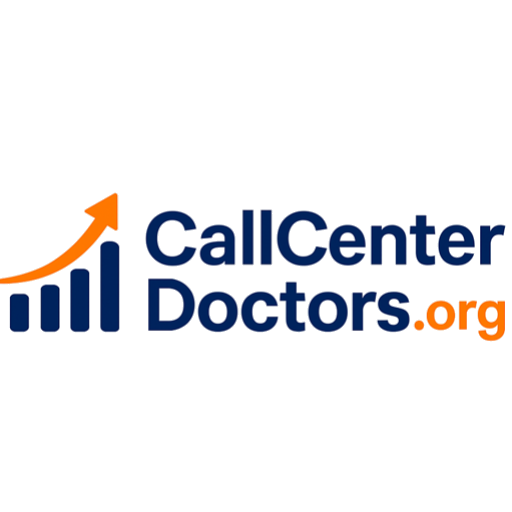In the fast-paced commercial world of today, contact centers are essential to consumer connection. Over time, though, even the most effective systems may become less effective.
frequent contact center health audits assist guarantee that your systems, teams, and procedures continue to operate at their peak efficiency, much like frequent check-ups by call center doctors who evaluate the general health of your customer service operations.
However, overuse of technology continues to be a widespread problem. Numerous dashboards and analytics systems are used by many firms, which makes the audit process needlessly complex. Instead of feeling like a tech marathon, a good health audit should concentrate on clarity, simplicity, and actionable insight.
1. Decide on the objective before you begin.
Clearly identify your objectives before delving into reports and statistics. Even the most thorough audit might lead to confusion rather than clarity if it has a clear goal.
Consider this:
- Are we attempting to cut down on typical call handling times?
- Do we wish to increase FCR, or first-call resolution?
- Which is more important to us, client pleasure or agent performance?
A well-defined goal ensures that you only collect relevant information and sets the right direction for your audit.
2. Focus on Key Metrics Rather Than Endless Data
One common mistake made during audits is to try to measure everything. Rather, take the viewpoint of a call center doctor and concentrate on the KPIs that best capture operational health.
Important Metrics to Track:
- Average Response Time: The speed at which representatives return client calls.
- First-Call Resolution (FCR): The number of issues resolved during the first call.
- Customer satisfaction (CSAT): post-call remarks and survey findings.
The ability of agents to manage calls efficiently without compromising the quality of their work is known as agent productivity. One may obtain clarity and reduce dependence on a number of often superfluous technology by focusing on these indicators.
3. Collect Useful Information From Trusted Sources
To obtain the whole picture, you don’t need to use a dozen platforms. Utilize the information that is currently in your systems.
Recommended Sources of Data:
- Make a call Document: Identify the patterns and obstacles in the reaction.
- CRM Reports: Examine customer satisfaction trends and interactions.
- Evaluations of quality: Look at the tone, accuracy, and empathy of the recorded calls.
Get candid feedback from agents regarding everyday difficulties and workflow snags. Together, these tools offer a comprehensive yet understandable overview of how your contact center operates.
4. Simplify Your Tech Stack
Instead of making your task more difficult, technology should make it easier. Too many overlapping systems lead to confusion and inefficiency.
- Making a list of all the tools you use is one way to simplify your systems.
- Sort out software that isn’t needed and get rid of duplicates that have the same features.
- If at all possible, link the CRM, ticketing, and reporting tools with the other systems.
Usability, training, and data quality are all enhanced in a more productive tech environment, freeing up your employees to concentrate on customer service rather than tool management.
5. Involve Agents in the Analysis
Because they deal with client issues on a regular basis, agents are your first-line observers. People should be actively involved in the audit process rather than being treated as data points.
Practical Ways to Incorporate Agents:
- Set up quick weekly meetings to get suggestions and viewpoints.
- Encourage anonymous contributions to ensure honest conversation.
- Senior agents ought to be assigned the role of “audit mentors” in order to monitor ongoing process issues.
This collaborative approach promotes ownership, drive, and practical knowledge that automated reports usually fail to capture.
6. Assess Fundamental Health Domains
Your audit will be more manageable and targeted if it is divided into smaller parts.
a. Efficiency of Operations
- Check that the call routing and processes are operating logically.
- Learn which laborious or repetitive jobs can be automated.
b. The Client Experience
- Use surveys and follow-ups to find out how satisfied people are.
- Track complaint patterns and pinpoint typical service problems..
c. Employee Administration
- Check shift scheduling, task balance, and agent engagement.
- Ensure that all agents have access to the latest training and materials.
To maintain balance, your audit should consider both human performance and technology, much as call center physicians consider both lifestyle factors and symptoms.
7. A report that is both understandable and useful.
Once the results have been reviewed, compile them into a clear and simple report.
The following should be included in your audit report:
- Top Strengths: Your contact center’s benefits.
- The main weaknesses are inefficiency or recurring problems.
- Among the suggested actions are thorough procedures, deadlines, and responsible parties.
To make insights visual and simple to understand so that everyone can act upon them, use charts, bullet points, and brief explanations.
Conclusion
Conducting a a health audit for a contact center does not require sophisticated technologies or a large number of reports. With a focused, human-centered strategy, you can simply maintain high performance and customer satisfaction.
Consider your audit team to be the doctors of the call center; they not only identify problems but also make sure the system is still operating correctly. Your contact center can continue to deliver great service without the burden of technology overload by empowering your employees, streamlining procedures, and focusing on what matters most.

